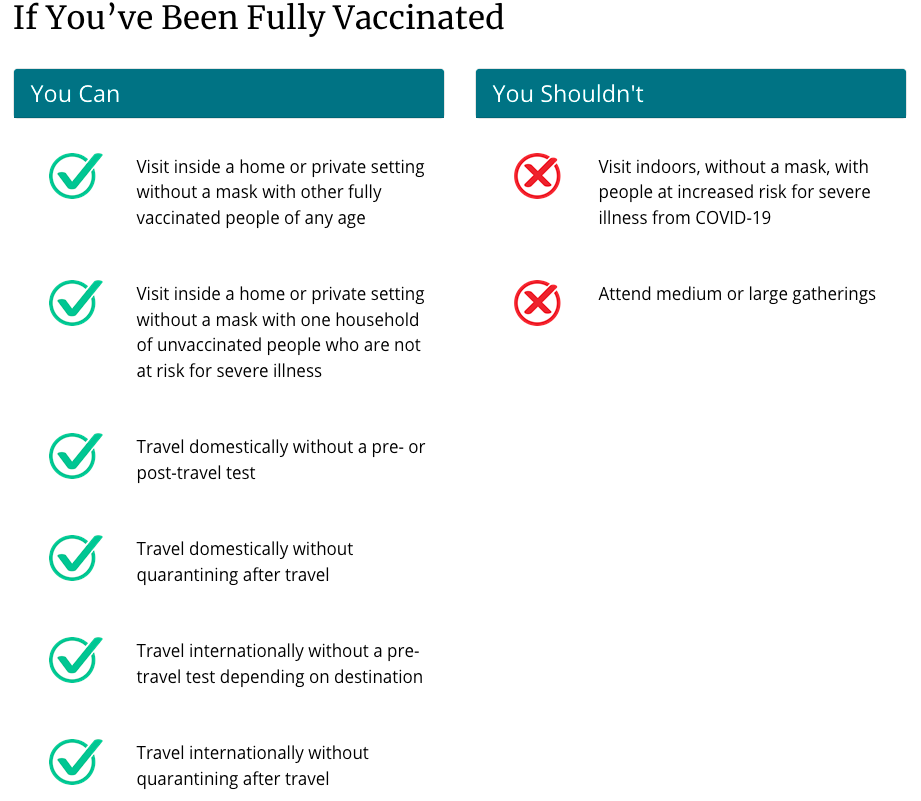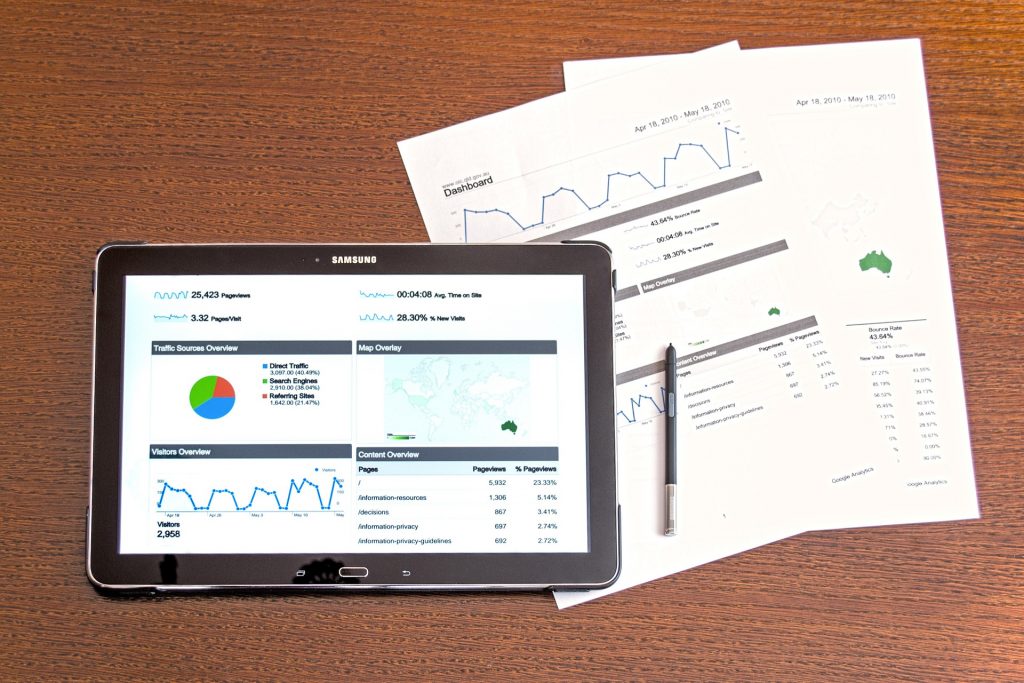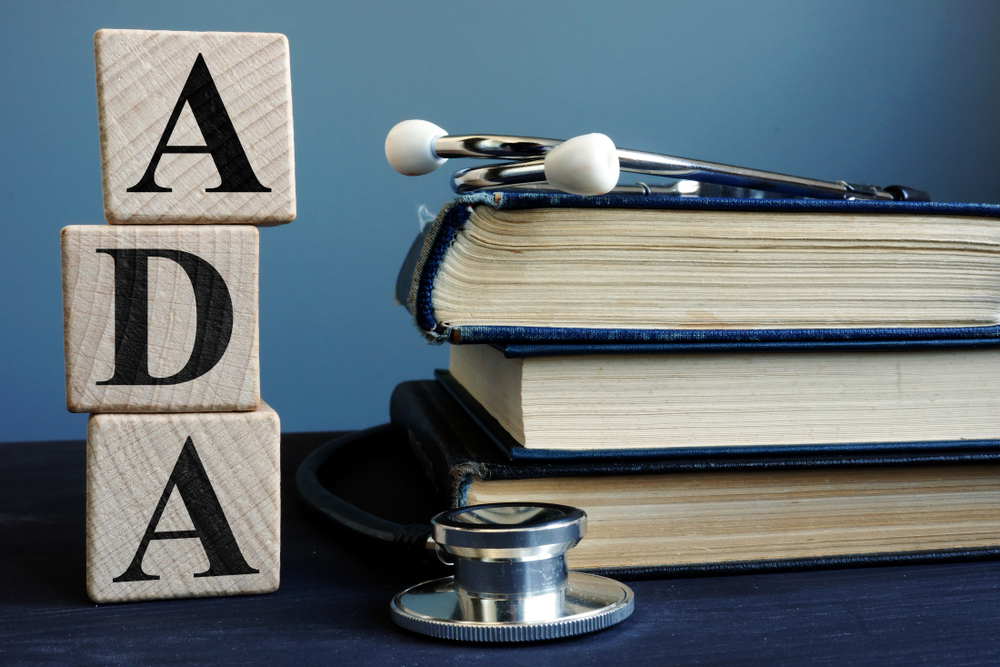
by admin | Apr 4, 2023 | Benefit Plan Tips, Tricks and Traps, Compliance
 When the COVID-19 public health emergency and national emergency were declared in 2020, no one anticipated they would still be in place in 2023.
When the COVID-19 public health emergency and national emergency were declared in 2020, no one anticipated they would still be in place in 2023.
On January 30, 2023, the President announced the intent to end the emergencies on May 11, 2023. The impact of the emergencies on employer-sponsored benefits affected certain coverages, reimbursements, and timelines. Multiple laws and regulations passed after 2020 created temporary rules tied to the end of the emergencies. As a result, employers will face significant tasks and obligations to unwind the changes from the last three years.
There are two areas of significance for employers: free coverages that will end, and required deadlines that will begin. Here’s what you need to keep in mind for each:
1. Free coverages that will end
The Families First Coronavirus Response Act (FFCRA) required health plans to cover the cost of COVID-19 testing and related services with no cost-sharing. The Coronavirus Aid, Relief, and Economic Security Act (CARES Act) expanded the FFCRA by adding over-the-counter tests and vaccinations by out-of-network providers.
When the emergency ends, this required no-cost coverage of testing and related services will sunset. Employers with fully insured plans should speak with their carrier to discuss whether there will be any option to continue the coverage with no cost-sharing. Each state’s Department of Insurance should provide guidance to carriers on when cost-sharing will resume. Self-funded groups may have more flexibility to continue to offer testing and related services with no-cost sharing. Due to the Affordable Care Act’s preventative services requirement, fully approved COVID-19 vaccines will remain covered, without cost, by in-network providers. A reduction in coverage will require a 60-day advance notice to affected employees.
Another specific impact is stand-alone telehealth benefits. Employees who were ineligible for their employer’s health plan were permitted to enroll in stand-alone telehealth benefits. The relief applies for the plan year that begins on or before the end of the emergency. An employer providing stand-alone telehealth will not be able to continue the coverage past the end of the current plan year and should review their policy to modify the language for stand-alone coverage. A reduction in coverage requires sending a notice to affected employees 60 days prior to the plan year end date.
2. Required deadlines that will begin
Many provisions of the last three years are tied to outbreak period rules issued in May 2020. The outbreak period lasts until 60 days after the end of the national emergency. These rules extended several key deadlines related to COBRA, special enrollment periods, claim submission, and appeal processes.
The Employee Benefits Services Administration issued a notice in 2021 providing guidance and clarity for employers, stating that the maximum period a deadline may extend is the earlier of one year from the date an original deadline would begin, or 60 days after the end of the outbreak period. This one-year period is known as tolling.
The challenge for employers will be tracking each individual’s tolling period as the end of the outbreak period nears. For example, an employee traditionally has 60 days to elect COBRA continuation coverage. The 60-day deadline would not begin until one year and 60 days later or 60 days after the outbreak period.
To illustrate this, imagine this scenario:
- Employee A’s benefits were terminated on December 31, 2022.
- Traditionally, they would have until March 2023 to elect COBRA.
- The relief states the 60-day countdown would not begin until the earlier of one year (December 2023) or July 10, 2023 (60 days after the end of the outbreak period).
- Since the outbreak period end date is planned for May 11, 2023, which is earlier than the one-year tolling, Employee A must make their COBRA election by September 20, 2023.
The tolling period has been a point of confusion for employers and may be more confusing as the outbreak period now has a planned end date of May 11, 2023.
The Department of Health and Human Services (HHS) provided a roadmap on February 9, 2022, outlining what may and may not be affected by the end of the emergencies. HHS also indicated it will continue “to review the flexibilities and policies implemented during the COVID-19 PHE to determine whether others can and should remain in place, even for a temporary duration, to facilitate jurisdictions’ ability to provide care and resources to Americans.”
Employers and plan sponsors should continue monitoring federal and state government resources. Employers may need to revise plan documents and provide new notifications to employees when coverage is changed or eliminated.
By Angela Surra
Originally posted on Mineral

by admin | Apr 21, 2021 | COVID-19, Health & Wellness
COVID-19 vaccines are effective at protecting you from getting sick. Based on what we know about COVID-19 vaccines, people who have been fully vaccinated can start to do some things that they had stopped doing because of the pandemic.
We’re still learning how vaccines will affect the spread of COVID-19. After you’ve been fully vaccinated against COVID-19, you should keep taking precautions—like wearing a mask, staying 6 feet apart from others, and avoiding crowds and poorly ventilated spaces—in public places until we know more.
These recommendations can help you make decisions about daily activities after you are fully vaccinated. They are not intended for healthcare settings.


What You Can Start to Do
If you’ve been fully vaccinated:
- You can gather indoors with fully vaccinated people without wearing a mask or staying 6 feet apart.
- You can gather indoors with unvaccinated people of any age from one other household (for example, visiting with relatives who all live together) without masks or staying 6 feet apart, unless any of those people or anyone they live with has an increased risk for severe illness from COVID-19.
- If you travel in the United States, you do not need to get tested before or after travel or self-quarantine after travel.
- You need to pay close attention to the situation at your international destination before traveling outside the United States.
- You do NOT need to get tested before leaving the United States unless your destination requires it.
- You still need to show a negative test result or documentation of recovery from COVID-19 before boarding a flight to the United States.
- You should still get tested 3-5 days after international travel.
- You do NOT need to self-quarantine after arriving in the United States.
- If you’ve been around someone who has COVID-19, you do not need to stay away from others or get tested unless you have symptoms.
- However, if you live in a group setting (like a correctional or detention facility or group home) and are around someone who has COVID-19, you should still stay away from others for 14 days and get tested, even if you don’t have symptoms.
What You Should Keep Doing
For now, if you’ve been fully vaccinated:
- You should still take steps to protect yourself and others in many situations, like wearing a mask, staying at least 6 feet apart from others, and avoiding crowds and poorly ventilated spaces. Take these precautions whenever you are:
- You should still avoid medium or large-sized gatherings.
- If you travel, you should still take steps to protect yourself and others. You will still be required to wear a mask on planes, buses, trains, and other forms of public transportation traveling into, within, or out of the United States, and in U.S. transportation hubs such as airports and stations. Fully vaccinated international travelers arriving in the United States are still required to get tested within 3 days of their flight (or show documentation of recovery from COVID-19 in the past 3 months) and should still get tested 3-5 days after their trip.
- You should still watch out for symptoms of COVID-19, especially if you’ve been around someone who is sick. If you have symptoms of COVID-19, you should get tested and stay home and away from others.
- You will still need to follow guidance at your workplace.

What We Know and What We’re Still Learning
- We know that COVID-19 vaccines are effective at preventing COVID-19 disease, especially severe illness and death.
- We’re still learning how effective the vaccines are against variants of the virus that causes COVID-19. Early data show the vaccines may work against some variants but could be less effective against others.
- We know that other prevention steps help stop the spread of COVID-19, and that these steps are still important, even as vaccines are being distributed.
- We’re still learning how well COVID-19 vaccines keep people from spreading the disease.
- Early data show that the vaccines may help keep people from spreading COVID-19, but we are learning more as more people get vaccinated.
- We’re still learning how long COVID-19 vaccines can protect people.
- As we know more, CDC will continue to update our recommendations for both vaccinated and unvaccinated people.

by ckistler | Feb 15, 2021 | COVID-19
 The COVID-19 crisis has not only stolen the health and well-being of people all over the world, but now, it seems, it has opened the door to criminals who want to steal your money and your identity. Historically, when there are times of crisis, the crime rate increases. We see this with natural disasters when stores are looted or when the economy is tanking and theft increases. Now, we are seeing this scenario play out in real time as thieves use the pandemic and fear to their benefit.
The COVID-19 crisis has not only stolen the health and well-being of people all over the world, but now, it seems, it has opened the door to criminals who want to steal your money and your identity. Historically, when there are times of crisis, the crime rate increases. We see this with natural disasters when stores are looted or when the economy is tanking and theft increases. Now, we are seeing this scenario play out in real time as thieves use the pandemic and fear to their benefit.
SCAMS TO WATCH OUT FOR
According to Forbes, Americans have lost more than $106 million to fraud related to COVID-19. These losses originate from all types of scams ranging from seeking donations for non-existent charities to price gauging for personal protective equipment. Dishonest individuals call victims and impersonate health organizations with a cure for COVID or products that can prevent infection if you just give them a credit card number. False bank accounts have been opened for the sole purpose of depositing unemployment benefit checks for non-existent persons. With crime so rampant, how can you tell what’s true and what’s false pertaining to this crisis? Here’s some big scams that you can look out for:
- Phishing/SMishing—Emails or text messages that appear to be from your bank or from an online retailer ask you to click a link or call a number so that you can verify personal information.
- Work-from-home scams—Posing as a company or even one of your co-workers, criminals email about fake opportunities to work from home and ask you to apply for a job by giving out personal information.
- Medical fraud—Fake websites are launched with virus testing kits or medical supplies for sale and collect credit card information.
- COVID contact tracing—In an attempt to steal personal information such as social security numbers, fraudsters claim to be contact tracers and have identified you as a possible close contact of a COVID patient. Now they ask you for your info to verify and log your exposure to the virus.
- Vaccine scheme—Calling individuals to sign them up to receive the COVID vaccine, the imposter asks for your personal information.
WAYS TO PROTECT YOURSELF FROM FRAUD
- The number one way to protect yourself from possible fraud related to the COVID-19 crisis is to never give out your personal information in response to an unsolicited email or phone call. If you haven’t called the company/bank/organization directly, and someone contacts you asking for your birthdate, maiden name, social security number, etc, don’t give it out. You have the right to decline their request so that you can feel secure in releasing your information. Simply tell the solicitor that you want to call them back and then look on your bill/website/known contact information and call that number to affirm that the person who contacted you is indeed who they say they are.
- If you suspect that your identity has been stolen, contact one of the three big credit bureaus: Equifax, Experian, or TransUnion. When you contact one of these agencies, you can request a freeze be put on your credit so that scammers cannot open any new accounts in your name.
- “Report financial identity theft fraud attempts to the FBI. The toll-free number is easy to remember: 1-800-CALL-FBI. Or you can go online to FBI.gov” reports Terry Savage, Next Avenue podcast co-host. Forbes has a great transcript of a recent episode online with lots of fantastic tips for protecting yourself against fraud and you can access it HERE.
In the midst of this pandemic crisis, the most important thing to focus on is the health and welfare of yourself and those you care most about. You shouldn’t have to waste time and effort chasing down scammers who have preyed on you when you are the most vulnerable. By following these easy (and always applicable) tips for protecting your identity and your finances, you can keep your focus on what really matters.

by admin | Jun 23, 2020 | Human Resources
 It’s an interesting time for the workforce as big changes are in store for everyone across the spectrum of the professional landscape. Every industry has been impacted COVID-19 and the continuous evolution of the situation, the economy and the workplace means that data and our understanding of all these things is shifting with it.
It’s an interesting time for the workforce as big changes are in store for everyone across the spectrum of the professional landscape. Every industry has been impacted COVID-19 and the continuous evolution of the situation, the economy and the workplace means that data and our understanding of all these things is shifting with it.
More reliable than the data itself sometimes is people thirst for more of it. We love our numbers and there are no shortage of people looking to provide it. Luckily, a good amount of that data ends up in our inbox!
So here are some of the latest workforce surveys that have caught our attention and what statistics you need to know as you look to address the issues within your own organization.
People Feel Isolated, but Want to Stay Home
According to a recent survey from Finance Buzz, around half of remote workers say they feel isolated, but less 20% of them want to go back to the office.
The perks of remote work are becoming clear to employees, with the ability to work from anywhere, flexibility of schedule and time saved from not commuting proving to be the most universal of the bunch.
But at the same time, in addition to feelings of isolation, employees are finding it harder to build relationships with co-workers, they struggle to separate work time and personal time and they aren’t getting enough face time with their leaders. Most of the issues can be addressed simply by committing to the principles that make operating remotely different.
“Remote work is not traditional work which is simply conducted in a home office instead of a company office,” says Darren Murph, Head of Remote for Gitlab. “There is a natural inclination for those who have not personally experienced remote work to assume that the core (or only) difference between in-office work and remote work is location (in-office vs. out-of-office). This is inaccurate, and if not recognized, can be damaging to the entire practice of working remotely.”
Employers are Ready to Return Workers, but at What Pace?
Dykema, a national law firm for businesses, surveyed employers asking about their plans to return employees to the office. One thing that became clear is their intent to do so. But what was less clear is how they plan to do it.
According to the data, 58% were planning to phase employees back into the office over the course of a month. Meanwhile, 21% want to get things back up and running much quicker than that, and another 21% say they won’t reopen until all Centers for Disease Control and Prevention (CDC) guidelines have been met. Only about half of all respondents have established a criteria for which employees will return to the office.
How Prospects are Prepping for Your Interview
Employee screening and background check service, JDP, released a new survey looking at how candidates prepare for job interviews and the results reveal how vital it is to manage digital assets and the organization’s reputation.
On average, prospects spend around seven hours researching a company before taking an interview. As you might expect, they start by examining the company website, search engine results for the company name, LinkedIn and Glassdoor. Aside from looking at your reputation, they want to know who your customers are, what kind of leadership the organization has, who your competitors are and last but not least, the financial health of the company.
Around 64% look to research the person who will interview them. Their biggest fears include speaking in front of a group, not knowing how to answer a question and looking nervous. Despite this, 63% do not do a mock interview with someone.
Automation is Expected Post COVID-19
It’s no surprise people believe automation is on the way, with research showing that the biggest believers fall into the 35-44 age group, according to research from global business process outsourcing firm SYKES. The survey showed that in all, around 59% of participants believe that COVID-19 will lead to more automation.
The findings expand upon previous research from SYKES that has shown people don’t fear automation taking their jobs. A November report found that 73% of American workers said the idea of humans and automation working together interested them and 68% said they would be more likely to apply to work for a company investing in new automation technologies.
By HR Exchange Network Editorial Team
Originally posted on hrexchangenetwork.com

by admin | Jun 2, 2020 | ACA, COVID-19, Human Resources
 The coronavirus crisis has forced human resources teams to juggle more challenges than ever before, from employee benefits and sick leave to new teleworking policies. On top of this, the drastic change in the American workplace has spawned new laws and protocols, while raising questions about how these new regulations affect standing legislation like the Americans with Disabilities Act (ADA). In order to remain fully compliant, HR departments need to keep abreast of the latest developments, especially regarding the Families First Coronavirus Response Act (FFCRA), which officially went into effect April 2. Here’s some guidance on how to remain ADA-compliant while your company implements new policies in response to COVID-19.
The coronavirus crisis has forced human resources teams to juggle more challenges than ever before, from employee benefits and sick leave to new teleworking policies. On top of this, the drastic change in the American workplace has spawned new laws and protocols, while raising questions about how these new regulations affect standing legislation like the Americans with Disabilities Act (ADA). In order to remain fully compliant, HR departments need to keep abreast of the latest developments, especially regarding the Families First Coronavirus Response Act (FFCRA), which officially went into effect April 2. Here’s some guidance on how to remain ADA-compliant while your company implements new policies in response to COVID-19.
Calling In Sick & Recruitment
According to the EEOC, the reasonable accommodation and nondiscrimination regulations mandated by the ADA, as well as the Rehabilitation Act, are still in effect; however, they “do not interfere with or prevent employers from following the guidelines and suggestions made by the CDC or state/local public health authorities about steps employers should take regarding COVID-19.” So as a general rule of thumb, any guidelines or protocols made by the CDC are considered independent from the ADA, and can be acted on accordingly while remaining compliant. Still, there are a few scenarios where the coronavirus takes precedent.
For example, if an employee covered by the ADA calls in sick, employers may request information about the illness, in order to protect the health and wellbeing of the workforce, as reported by the EEOC. If the employee exhibits symptoms of COVID-19, the ADA allows the employer to require the employee to stay home.
The EEOC also offers guidance if an employer is hiring during the crisis. After making a conditional job offer, employers can screen potential hires for coronavirus symptoms—so long as this practice is applied to all employees that are entering the same or similar position.
Employees With COVID-19
If an employee contracts coronavirus, their symptoms would likely not qualify as a disability according to ADA guidelines. Temporary impairments with no substantial long-term impact, like broken limbs, concussions, pneumonia, and influenza, are typically not considered disabilities under the law.
However, according to Littler Mendelson P.C., a legal firm specializing in labor and employment law, an employee with severe COVID-19 symptoms, or one whose symptoms worsen or complicate a pre existing health issue or concern, could be entitled to ADA accommodation or protection. A panel consisting of Littler counsel, shareholders, and associates report that “the ADA requires employers to assess whether a particular employee is “disabled” under the ADA on an individualized basis, taking into account the employee’s particular reaction to the illness, their symptoms and any other relevant considerations.”
It’s also important to refer to your state’s specific disability laws, and pay particular attention to how your state defines disability. If those laws are more lax than the ADA’s, it’s possible an employee with COVID-19 could qualify for disability.
By Bill Olson
Originally posted on ubabenefits.com

 When the COVID-19 public health emergency and national emergency were declared in 2020, no one anticipated they would still be in place in 2023.
When the COVID-19 public health emergency and national emergency were declared in 2020, no one anticipated they would still be in place in 2023.





